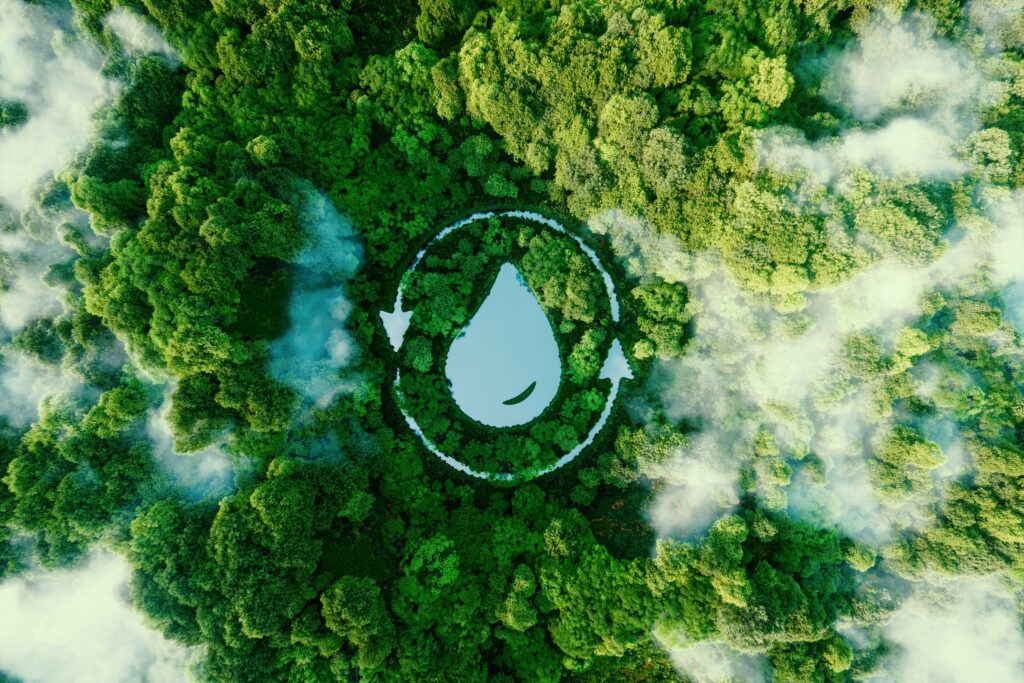
Kelly Bennett
Co-Founder & CEO
Shortly after my cofounders and I made our first foray into water (it’s hard to believe that was nearly 10 years ago), a fascinating opportunity was brought to our attention. A shallow aquifer formation in Colorado created the possibility of injecting large quantities of water into a slow-moving, subsurface system, effectively storing water for a decade as it migrated beneath the surface toward a major river. The aquifer was a lens, holding stored water in a confined formation above deeper aquifers. The water could be diverted out through wells along the way, creating stored supply for diverse end uses, possibly even potential supply for interstate river compact needs. The project never came to be, despite being discussed for years. It is one of many novel storage concepts around the country that one often hears discussed and rarely sees come to fruition. In the years since we learned about the project, we have seen several climate-water cycles, with drought scorching part of the state that this project could have served and floods wreaking devastation in the same river drainage. As runoff season now rages following a winter that saw massive snowfall and an incredibly wet spring in the West, I find myself pondering: why haven’t we done more to capture massive water windfalls?
Water Demands and Management in the West
There is no doubt that in many places, particularly the West, water supplies are under increasing stress. Natural systems are changing and demand is growing. The message from academia and the regulatory powers that be is laser-focused: we must curb demand. This means less water use per person in growing towns and cities, and much less water used in agriculture. This all means a fundamental shift in the way that water in the West works, which has huge implications for people, landscapes, and the economy. According to data available from Denver Water, Denver’s population has nearly doubled over the last 30 years, while its gross water use has stayed fairly flat (it has actually decreased slightly since 2000). Yet the utility’s customers are still using 20% more water per household than it wishes they would. Recent reservoir depletion in the Colorado River Basin led to emergency demand management measures as states ‘voluntarily’ gave up entitlements under the river compact to avoid what would be ugly litigation. This year, demand curtailment and Mother Nature have helped mitigate some of the extreme reservoir depletion. Unrestricted flows in the Upper Colorado River Basin will likely be 148% of average in 2023, according to recent analysis from the US Bureau of Reclamation. But we may well find ourselves back in dire straits after another inevitable future cycle of dry years. Reservoir levels provide a jarring and comprehensible way to illustrate water shortage and the need for storage, but we only see the value of storage when stocks get near the bottom of the proverbial barrel. What about its utility and importance when rivers are swollen, like now?
The California Case: Missed Opportunities
Take California, for example. All the attention paid to dwindling Upper Colorado River Basin reservoirs has diverted attention away from an extraordinary statistic this year. According to the National Oceanic and Atmospheric Administration program data, in April 2023, then-current reservoir levels plus peak snowpack in the Western Sierra Nevada drainage amounted to nearly 250% of total reservoir capacity of the 28 sites in the entire drainage. So what happens to that extraordinary surplus? It makes its way past some of the country’s most important agricultural land, hundreds of thousands of acres of which have been fallowed in the name of water conservation, out to the ocean. This smacks of textbook economic waste. I distinctly remember conversations with diverse, frustrated stakeholders about this very same dynamic back in 2017 when an atmospheric river event caused massive precipitation and the Oroville dam nearly failed. Six short years later, we are still mostly focused on which additional land should come out of agricultural production instead of also figuring out how to capture more water and the economic benefits that could be derived from these stores.
Aquifer Storage and Recovery (ASR): A Potential Solution?
California adopted rules intended to streamline aquifer storage and recovery (ASR) in 2012, and Texas followed suit in 2015. So far, neither has resulted in a run-up of projects to capture the benefits of high-water events or recover treated water that would otherwise be discharged or evaporated. Data from the Texas Water Development Board show only seven operational ASR sites as of May 2023, with many in various stages of exploration and planning and many others that have been stopped. Is ASR a panacea to our water challenges? Certainly not, but one would think that in places where water wells have required deepening or been abandoned over the last decade due to lower water tables, it could provide some relief for future water users. In Colorado, a reservoir project serving one of the fastest-growing population centers in the country just got approval after 18 years in review. It won’t break ground for another two years and will take many years to fill. There are countless other storage projects that will never make it past proposal, let alone decades of subsequent environmental review. In the meantime, opportunities to store large excesses of water will be missed, an unforced error that future generations will pay for more dearly than us.
Toward a More Resilient Future:
The Hydro-Illogic Cycle and Collaboration
Cynics, over the years, have renamed the hydrologic cycle, the hydro-illogic cycle. They note that when lawn irrigation restrictions (and shocking pictures of an empty Lake Mead) force people to acknowledge drought, the public values water. However, after a few solid rains, it’s like the crisis never happened, and interest in innovating (and investing in) novel solutions for water management quickly wanes. Zooming out a bit from B3 Insight’s work in oilfield water and Colorado River modeling projects shines a light on a broader opportunity, and need, for industries to collaborate more around water. There is a tremendous amount of work happening within the confines of each industry; perhaps more intentional cross-pollination could help accelerate needed outcomes as we strive to make water systems more resilient. It’s a systems-thinking challenge and these are complex systems. Recent dialogues in New Mexico between rural water users and the oil and gas industry are a step in the right direction but will require government, NGOs, and other entities to get on board. Time will tell if all the needed legs of the water resiliency stool can align, but I hope we don’t routinely watch opportunity be swept out to sea in the meantime.

